Understanding the dosage-response relationships is critical for programming effective resistance training that maximizes results without wasting effort.
Two recent large-scale meta-regressions led by Pelland et al. (2024) and Remmert et al. (2025) offer the most up-to-date data on how volume and frequency affect hypertrophy and strength.
These studies help us answer essential coaching questions:
- How many sets per week is optimal?
- How many sets per session is optimal?
- And how often should an athlete train each muscle group?
What makes these studies unique is their use of "fractional" set counting.
Unlike traditional methods that count every set equally, these meta-analyses distinguish between direct sets (which train the target muscle or movement directly) and indirect sets (which provide stimulus but are not the primary focus).
Fractional accounting gives us a more precise understanding of the true training stimulus and is the model with the strongest evidence in these studies.
Whether you're building muscle, maximizing strength, or trying to do both, this guide shows you how to get the most out of each session and week.
Weekly Volume: The Big Picture
Hypertrophy
There is a clear dose-response relationship: more volume = more growth, up to a point.
Gains continue to increase with volume, but with diminishing returns beyond moderate doses.
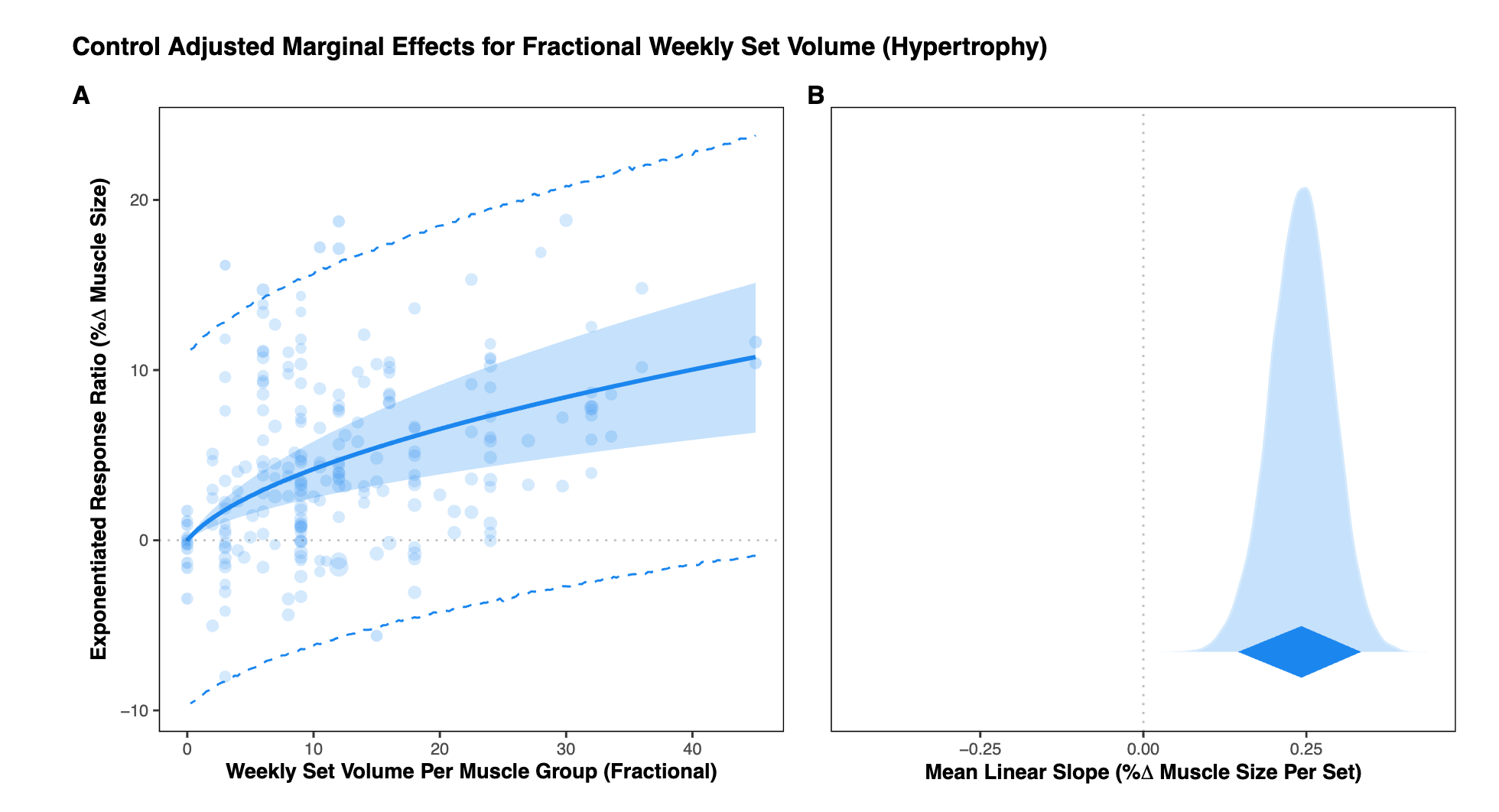
Efficiency Tiers from Pelland et al. (2024)
- Minimum effective dose: ~4 fractional sets/week per muscle
- High efficiency: 5–10 sets/week
- Intermediate to low efficiency: 11–20+ sets/week
- Unclear or potentially negative returns: >30 sets/week
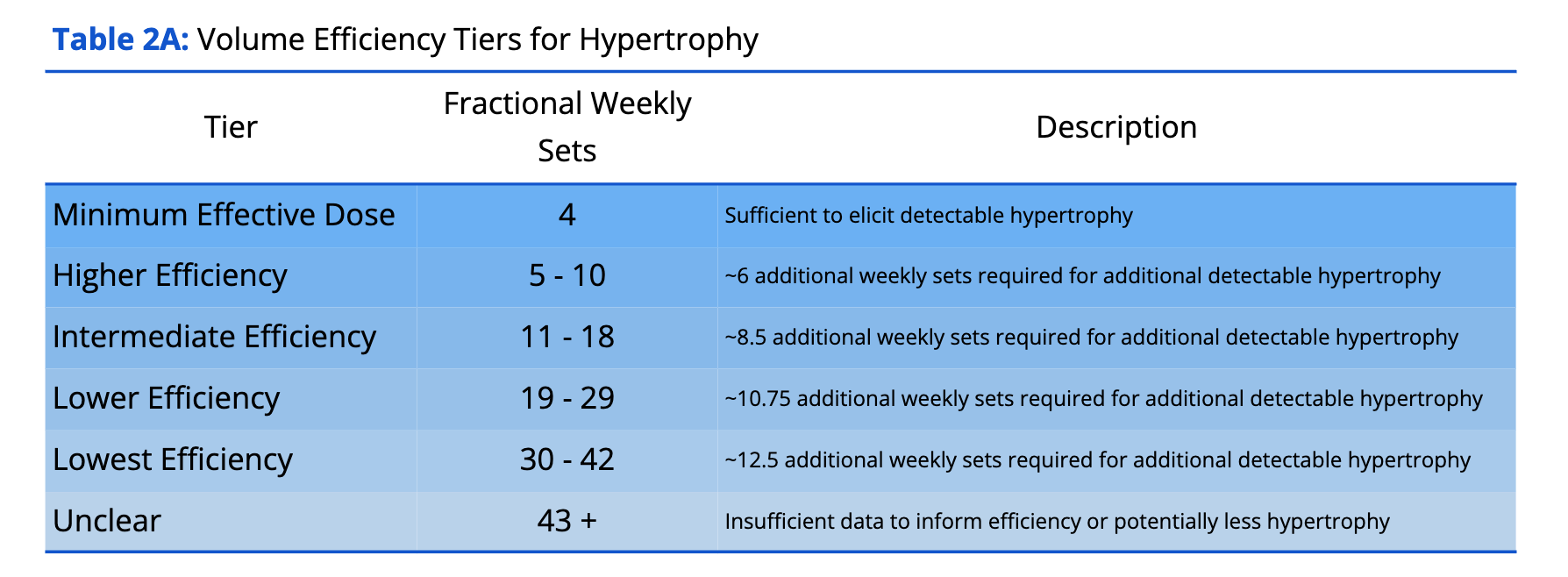
Strength
Strong improvements occur with relatively low volume, and diminishing returns occur rapidly after the minimum dose.

Efficiency Tiers
- Minimum effective dose: ~1 fractional set/week
- High efficiency: 2–4 sets/week
- Additional sets above 5/week add minimal benefit

Per-Session Volume: When Does "More" Stop Helping?
Hypertrophy (fractional sets)
- Positive dose-response up to a point.
- The PUOS occurs at approximately 11 fractional sets per session.
- Beyond this point, additional sets are less likely to provide detectable gains, but not necessarily harmful.
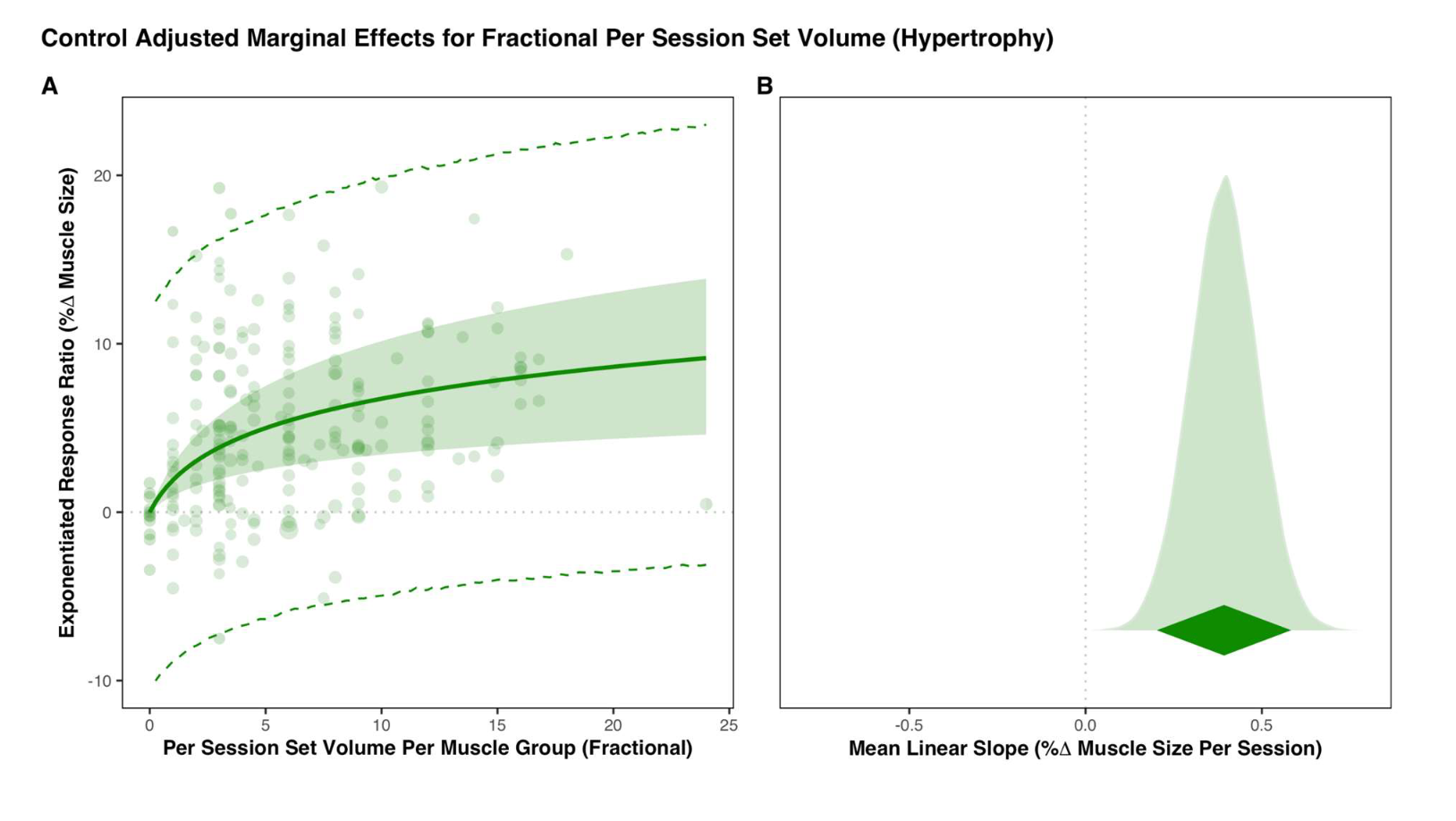
Strength (direct sets)
- Strong diminishing returns are observed with per-session volume.
- PUOS occurs at approximately 2 direct sets per session.
- Strength gains plateau quickly after 2 sets, particularly for exercises assessed directly (e.g., squats to improve squat 1RM).
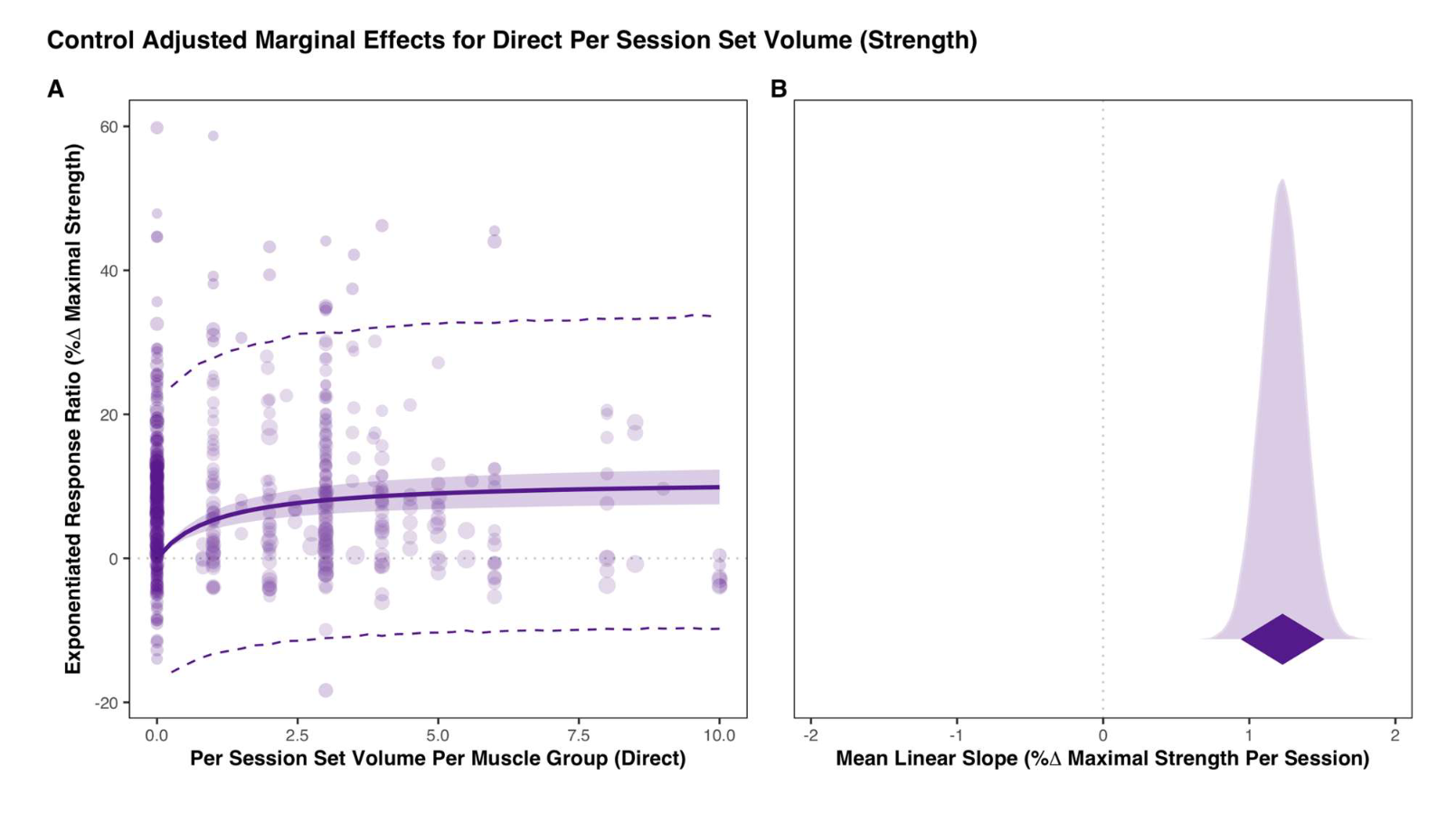
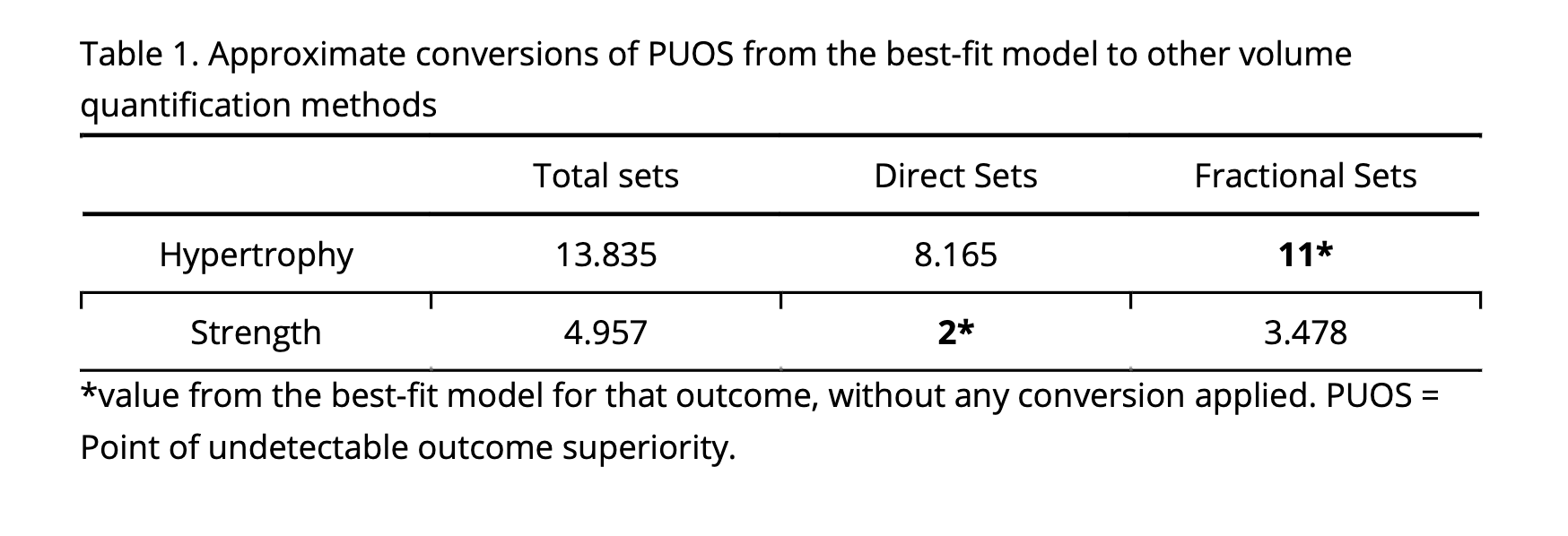
Reconciling Weekly vs. Per-Session Volume
It may seem contradictory that 11 fractional sets per session is the point of diminishing returns, while 12 sets per week is considered optimal for hypertrophy.
Here’s how to make sense of this:
- The 11-set PUOS refers to the maximum per-session volume beyond which additional growth becomes statistically unlikely.
- The 12-set weekly target reflects the most efficient volume zone, not the maximum or cap. In fact, benefits continue beyond 12 weekly sets, just at a slower rate.
- Importantly, in most of the studies analyzed, weekly sets were distributed across 2–3 sessions. That means the per-session volumes were usually around 5–7 sets and well within the PUOS threshold.
- The PUOS model simply tells us that if we cram too many sets into a single session (e.g., 12+ for a muscle group), we risk diminishing returns due to fatigue, performance drop-off, or recovery limitations.
So, the recommendation to perform 10–15 fractional sets per week for hypertrophy, spread across 2–3 sessions, aligns perfectly with both findings.
Frequency: How Often Should You Train a Muscle or Lift?
Hypertrophy
- Frequency has a small or negligible independent effect on growth.
- Frequency primarily helps by spreading weekly volume across more sessions to manage fatigue and performance.
- Training a muscle group 1–3x/week is typically sufficient if total weekly volume is maintained.
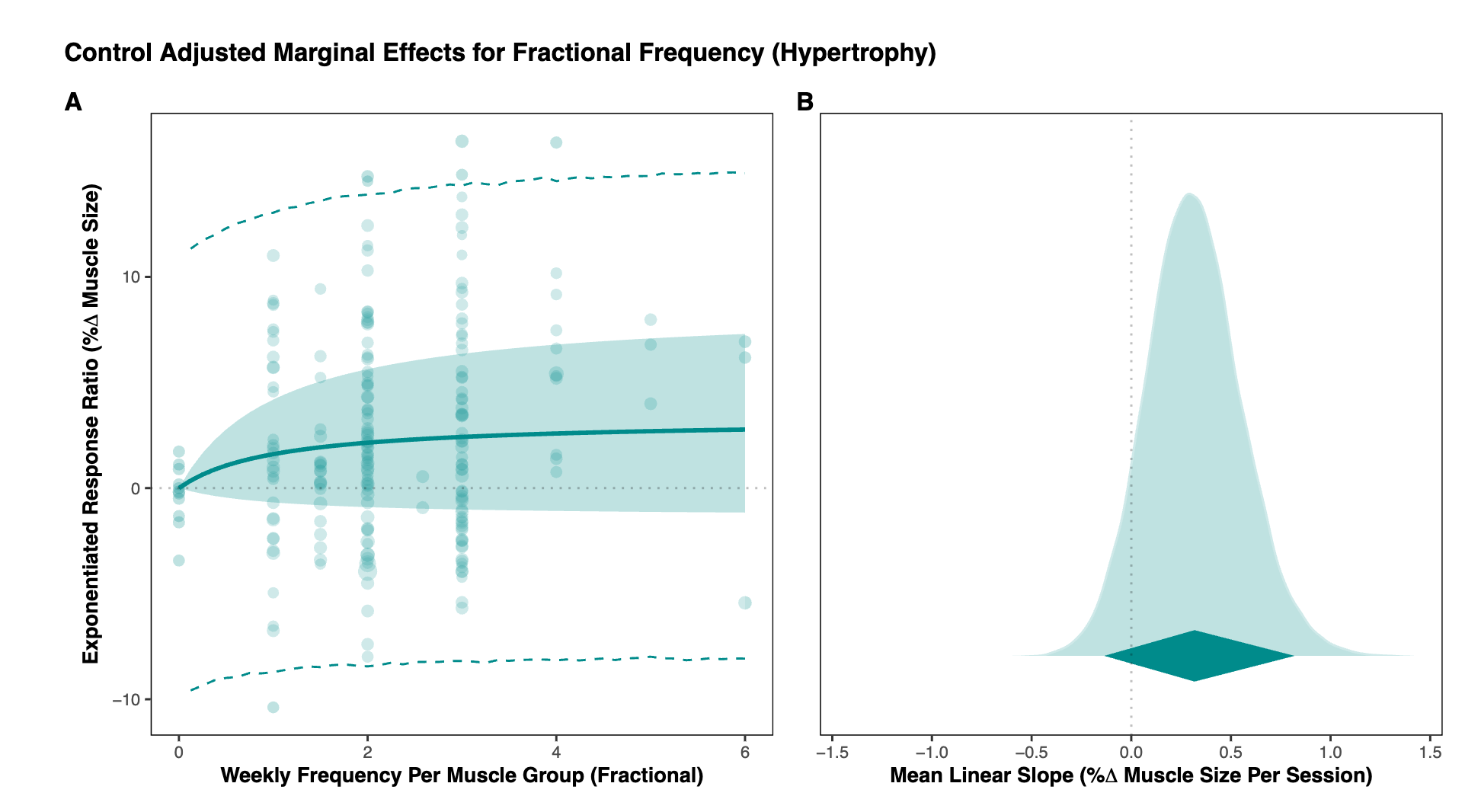
Strength
- Frequency has a more direct effect on strength gains.
- More frequent practice improves motor learning and performance of the tested lift.
- A training frequency of 2–3x/week per movement is ideal for maximizing strength.
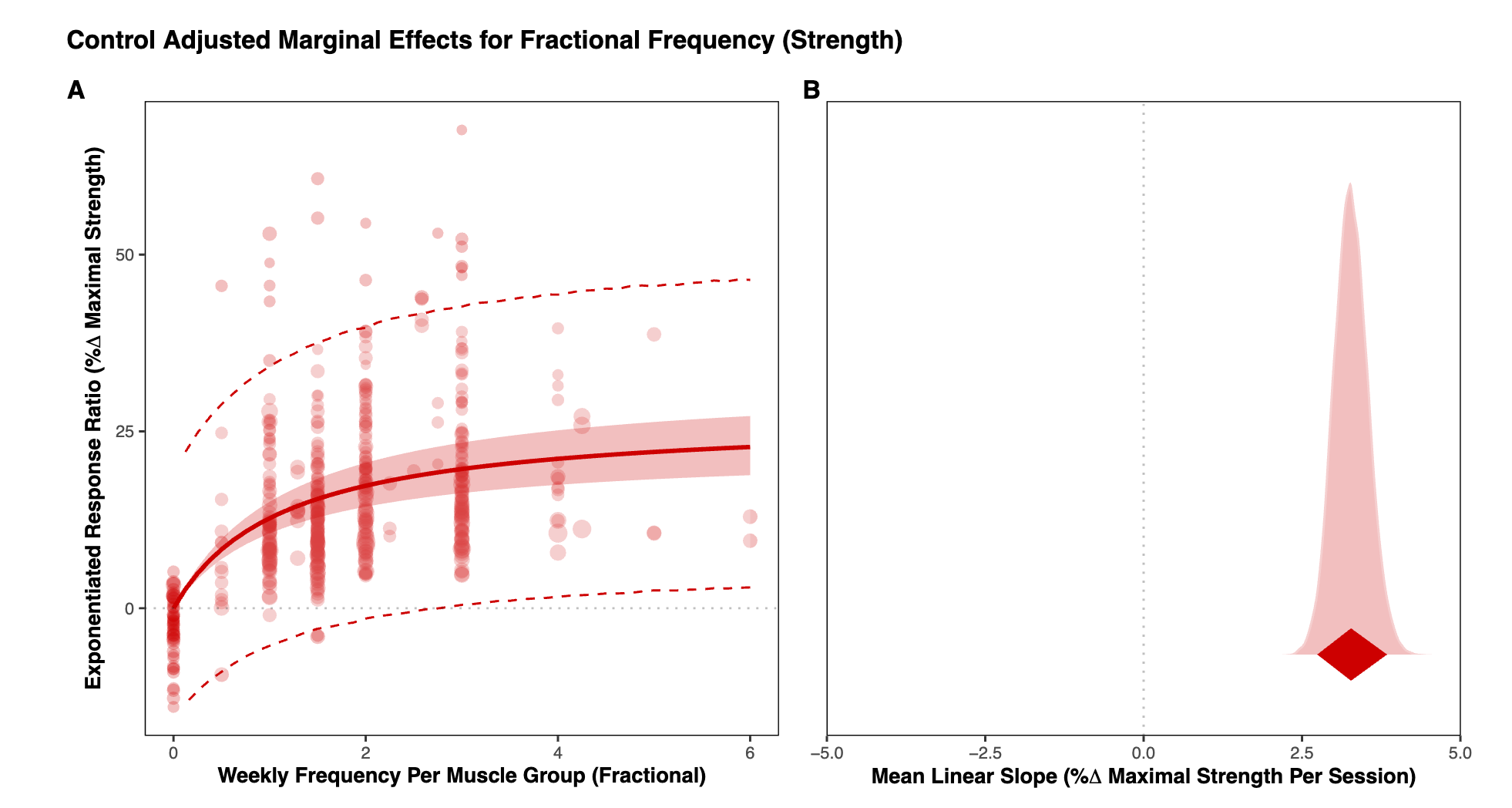
Practical Programming Targets
| Goal | Weekly Volume (sets) | Frequency | Sets per Session |
|---|---|---|---|
| Muscle | 10–15 (fractional) | 2–3 | 5–8 |
| Strength | 3–4 (direct) | 2–3 | 1–2 |
Weekly Session Breakdown
Heres how I'd break down volume per session and per week based on different training frequencies.
For strength, I'd only consider the primary and accessories with any tertiery work not counted. While this would still be fractional work, direct work is more important for strength.
2 Days/Week:
- Muscle: 6 sets per session = 12 sets/week
- Strength: 2 sets per session = 4 sets/week
3 Days/Week:
- Muscle: 4 sets per session x 3 = 12 sets/week
- Strength: 1–2 sets per session = 3–6 sets/week
4 Days/Week:
- Muscle: 3 sets per session = 12 sets/week
- Strength: 1–2 sets per session = 4–8 sets/week
5 Days/Week:
- Muscle: 2–3 sets per session x 5 = 10–15 sets/week
- Strength: 1-2 sets per session = 5-10 sets/week
Coach's Programming Takeaways
These two meta-analyses provide the clearest picture yet of how to program volume and frequency for hypertrophy and strength.
They reveal that more isn’t always better, and that the efficiency of each additional set depends on the weekly total, the session structure, and the muscle or movement being trained.
The 3 primary takeaways are:
- For hypertrophy, total weekly volume is your primary lever.
- For strength, both volume and frequency matter, but returns taper off rapidly.
- Fractional set counting provides a more accurate way to quantify your programs and ensure you're not overestimating volume from accessory work.
References
- Pelland, J., Remmert, J., Robinson, Z., Hinson, S., & Zourdos, M. (2024). The Resistance Training Dose-Response: Meta-Regressions Exploring the Effects of Weekly Volume and Frequency on Muscle Hypertrophy and Strength Gain. SportRχiv.
- Remmert, J., Pelland, J., Robinson, Z., Hinson, S., & Zourdos, M. (2025). Is There Too Much of a Good Thing? Meta-Regressions of the Effect of Per-Session Volume on Hypertrophy and Strength. SportRχiv.

